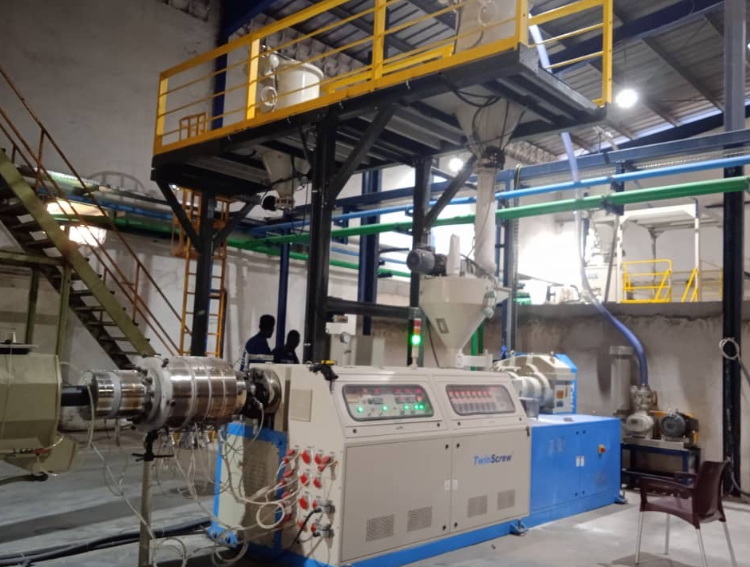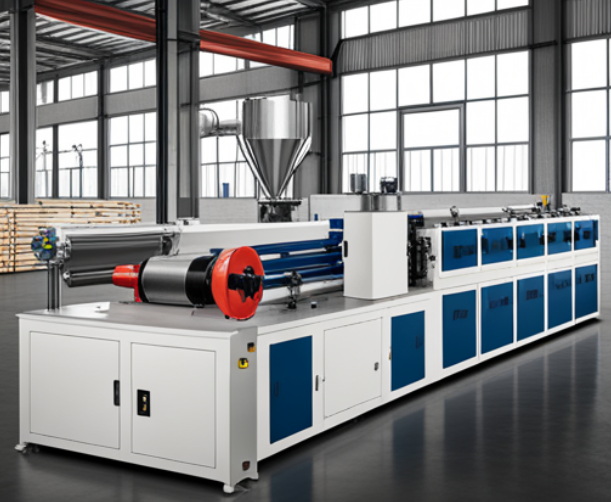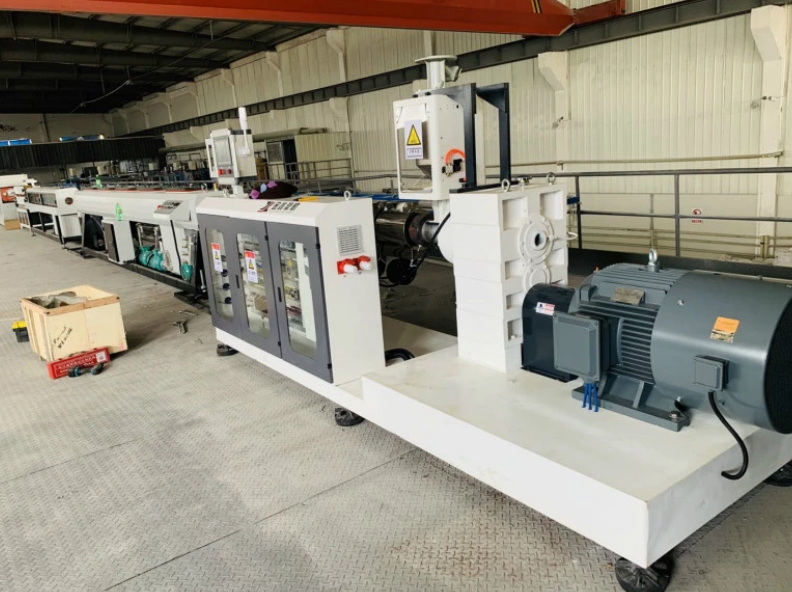Content Menu
● Introduction to Plastic Pipe Extrusion
>> Raw Material Selection
● Quality Control Measures
>> 1. Raw Material Testing
>> 2. Equipment Maintenance
>> 3. Process Parameter Control
>> 4. Final Product Inspection
● Technologies Used in Quality Control
>> 1. Automation and Robotics
>> 2. Sensors and Instrumentation
>> 3. Certifications and Standards
>> 4. Material Formulation
>> 5. Supply Chain Management
● Challenges in Quality Control
>> 1. Raw Material Variability
>> 2. Process Complexity
>> 3. Regulatory Compliance
● Future Developments
● Conclusion
● FAQ
>> 1. What are the key factors in ensuring quality control in plastic pipe extrusion?
>> 2. How do plastic pipe extrusion machinery factories maintain equipment?
>> 3. What role does automation play in quality control?
>> 4. What certifications are important for plastic pipe extrusion machinery factories?
>> 5. How do factories ensure consistent dimensional accuracy in plastic pipes?
● Citations:
Plastic pipe extrusion machinery factories play a crucial role in producing high-quality plastic pipes that meet various industrial standards and applications. Ensuring quality control in these factories involves a comprehensive approach that includes rigorous testing of raw materials, precise control of the extrusion process, and thorough inspection of the final products. This article will delve into the methods and technologies used by plastic pipe extrusion machinery factories to maintain quality control.

Introduction to Plastic Pipe Extrusion
Plastic pipe extrusion is a process that transforms thermoplastic materials into pipes of various shapes and sizes. The process involves heating and melting the plastic pellets, which are then extruded through a die to form the desired pipe profile. The quality of the final product depends on several factors, including the quality of the raw materials, the precision of the extrusion machinery, and the control of process parameters such as temperature, pressure, and speed.
Raw Material Selection
The first step in ensuring quality control is selecting high-quality raw materials. Plastic pipe extrusion machinery factories typically use materials like polyethylene (PE), polypropylene (PP), polyvinyl chloride (PVC), and polyurethane (PU), each with its own set of properties suitable for different applications. For instance, PVC is commonly used for water pipes due to its resistance to corrosion and chemicals. The selection of raw materials is critical because it directly affects the durability, flexibility, and chemical resistance of the final product.
Quality Control Measures
Quality control in plastic pipe extrusion involves several key measures:
1. Raw Material Testing
Before production begins, raw materials are thoroughly tested for purity, moisture content, and other properties to ensure they meet the required standards. This includes tests such as infrared spectroscopy and melt index testing to verify the material's properties. These tests help identify any contaminants or impurities that could compromise the quality of the final product.
2. Equipment Maintenance
Regular maintenance of the extrusion machinery is crucial. This includes inspecting and maintaining the extrusion die and screw to ensure they are in optimal condition. Any defects or malfunctions can significantly affect the quality of the final product. Maintenance tasks include cleaning, lubricating parts, and replacing worn components to prevent wear and tear.
3. Process Parameter Control
Effective monitoring and control of process parameters such as temperature, pressure, and speed are essential. Advanced systems are used to monitor these variables in real-time, ensuring they remain within specified limits. This control is critical because even slight deviations can lead to defects such as uneven thickness, warping, or brittleness in the pipes.
4. Final Product Inspection
After the extrusion process, the final products undergo rigorous testing for dimensional accuracy, surface finish, and mechanical properties. This includes checks for tensile strength, impact resistance, and other relevant properties depending on the intended application. For example, pipes intended for water supply systems must meet specific standards for pressure resistance and durability.
Technologies Used in Quality Control
Plastic pipe extrusion machinery factories utilize various technologies to enhance quality control:
1. Automation and Robotics
Automation plays a significant role in improving efficiency and accuracy. Robotic inspection systems equipped with vision sensors can detect surface defects and dimensional discrepancies with high precision. These systems can also automate tasks such as sorting and packaging, reducing manual labor and minimizing the risk of human error.
2. Sensors and Instrumentation
Sensors and instrumentation are used to monitor and control process parameters. Temperature sensors, pressure gauges, and flow meters ensure that the extrusion process operates within optimal conditions. These devices provide real-time data that can be used to adjust the process parameters as needed, ensuring consistent quality across all batches.
3. Certifications and Standards
Plastic pipe extrusion machinery factories must adhere to stringent industry standards and certifications, such as ISO 9001:2015, to ensure their products meet durability, safety, and performance requirements. These certifications emphasize a systematic approach to quality management across all stages of production, from raw material sourcing to final product testing.
4. Material Formulation
Some factories also focus on formulating custom material blends to enhance specific properties of the pipes, such as UV resistance or flexibility. This involves combining different polymers and additives to achieve the desired performance characteristics.
5. Supply Chain Management
Effective supply chain management is crucial for maintaining quality control. This includes ensuring that raw materials are sourced from reliable suppliers and that all components used in the production process meet the required standards.

Challenges in Quality Control
Despite the advancements in technology and quality control measures, plastic pipe extrusion machinery factories face several challenges:
1. Raw Material Variability
Variability in raw materials can affect the consistency of the final product. Even slight differences in material properties can impact the pipe's performance and durability.
2. Process Complexity
The extrusion process is complex and sensitive to changes in temperature, pressure, and speed. Maintaining optimal conditions requires sophisticated control systems and skilled operators.
3. Regulatory Compliance
Complying with changing regulatory standards can be challenging. Factories must stay updated with the latest certifications and standards to ensure their products remain compliant.
Future Developments
The future of plastic pipe extrusion is likely to see significant advancements in technology and sustainability. There is a growing focus on using recycled materials and developing more environmentally friendly production processes. Additionally, advancements in automation and AI are expected to further enhance quality control by providing real-time predictive maintenance and quality monitoring.
Conclusion
Plastic pipe extrusion machinery factories ensure quality control through a combination of rigorous raw material testing, precise control of the extrusion process, and thorough inspection of the final products. By leveraging advanced technologies such as automation and sensors, these factories can maintain high standards of quality while optimizing production efficiency. As the industry continues to evolve, focusing on sustainability and technological innovation will be key to meeting future demands.

FAQ
1. What are the key factors in ensuring quality control in plastic pipe extrusion?
- Answer: Key factors include the quality of raw materials, precise control of process parameters (temperature, pressure, speed), and thorough inspection of the final products.
2. How do plastic pipe extrusion machinery factories maintain equipment?
- Answer: Regular maintenance involves inspecting and maintaining the extrusion die and screw to ensure they are in optimal condition. This includes cleaning, lubricating parts, and replacing worn components.
3. What role does automation play in quality control?
- Answer: Automation enhances efficiency and accuracy by allowing for real-time monitoring and adjustment of process parameters. It also reduces human error and improves product consistency through technologies like robotic inspection.
4. What certifications are important for plastic pipe extrusion machinery factories?
- Answer: Certifications like ISO 9001:2015 are crucial as they emphasize a systematic approach to quality management across all stages of production, ensuring products meet stringent standards for durability, safety, and performance.
5. How do factories ensure consistent dimensional accuracy in plastic pipes?
- Answer: Consistent dimensional accuracy is achieved through precise control of the extrusion process, using technologies such as laser micrometers for accurate measurements, and maintaining optimal process conditions.
Citations:
[1] https://plasticextrusiontech.net/quality-control-and-testing-procedures-in-plastic-extrusions/
[2] https://plastic-extrusionmachines.com/the-basic-principles-of-pipes-extrusion/
[3] https://www.youtube.com/watch?v=QPi-A5NKoNg
[4] https://www.linkedin.com/pulse/components-operations-plastic-pipe-extrusion-line-dora-ding
[5] https://www.yjing-extrusion.com/how-do-plastic-extrusion-equipment-manufacturers-ensure-quality.html
[6] https://plasticextrusiontech.net/quality-control-and-testing/
[7] https://www.la-plastic.com/post/what-is-the-quality-control-of-extrusion-process
[8] https://www.youtube.com/watch?v=QpldSHjT_q4
[9] https://machine.goldsupplier.com/blog/hdpe-pipe-extrusion-process/
[10] https://www.rocalextrusions.co.uk/news/quality-control-in-plastic-extrusion-to-ensure-consistent-results/
[11] https://www.inplexllc.com/blog/quality-assurance-for-extrusion-products/
[12] https://aceretech.en.made-in-china.com/product/nmEpGaiAWUVd/China-Quality-Assurance-PVC-Pipe-Extruder-Machine-Plastic.html
[13] https://cbmplasticsusa.com/quality-assurance-in-plastic-profile-extrusion/
[14] https://jydjx.com/maximizing-efficiency-and-quality-a-comprehensive-guide-to-plastic-pipe-extrusion-lines/
[15] https://www.deskera.com/blog/quality-control-in-plastic-manufacturing/
[16] https://eupegypt.com/blog/pvc-pipe-manufacturing-process/
[17] https://www.adremac.com/the-basic-principles-of-pipes-extrusion/
[18] https://www.yjing-extrusion.com/how-do-extrusion-downstream-equipment-manufacturers-ensure-product-quality.html
[19] https://www.kellerplastics.com/quality-assurance-in-plastic-extrusion-certifications-and-standards/
[20] https://www.shutterstock.com/search/extrusion-machine-plastic
[21] https://www.youtube.com/watch?v=o_XWQTzZVB0
[22] https://www.istockphoto.com/photos/plastic-extrusion-machine
[23] https://www.youtube.com/watch?v=k-J58gKlOWU
[24] https://stock.adobe.com/search?k=extrusion
[25] https://www.shutterstock.com/search/plastic-pipe-testing
[26] https://www.beierextrusion.com/75-250mm-pvc-pipe-extrusion-production-line-video/
[27] https://www.istockphoto.com/photos/extrusion-machine
[28] https://www.shutterstock.com/search/plastic-extrusion-machine
[29] https://www.beierextrusion.com/pvc-double-exit-pipe-extrusion-line-pvc-pipe-extrusion-machinery-pvc-pipe-extruder-video/
[30] https://turuiplas.en.made-in-china.com/product/CbWQlIoKrYHs/China-Pipe-Making-Machine-Extrusion-machine-Adopt-The-Quality-AC-Frequency-Conversion-Control-Device.html
[31] https://www.gettyimages.co.uk/photos/pvc-pipe-extrusion?family=creative
[32] https://www.youtube.com/watch?v=8lCwfjp9pQs
[33] https://ieomsociety.org/proceedings/2023houston/297.pdf






















